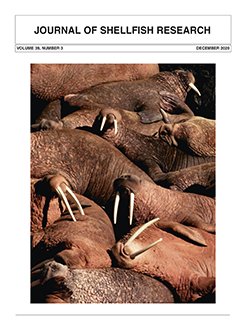Culture data representing 96 observations of larval survival for the blue crab (Callinectes sapidus) over the time period 2008–2019 were examined to determine factors relevant to larval health and survival. The study spans years before and following the Deepwater Horizon (DWH) oil spill in the northern Gulf of Mexico (GOM). Variability in survival of cultured larvae was high over the study period, despite attention to water quality standards and consistent culture protocols. Generalized linear models were constructed using the pre/postspill factor, several covariates, and individual crabs as subjects to predict the 96 larval survival observations from cultures representing 25 individual spawning female crabs. Survival decreased with age of the culture and nitrite concentration as covariates for both zoeal and megalopal stages. Notwithstanding effects of the two covariates, prespill survival was substantially higher than postspill survival for both zoeae and megalopae. Mean prespill survival values of 13.2% and 21.5% were notably higher than mean postspill survival of 4.7% and 11.2% for zoeae and megalopae, respectively. Postspill studies in the northern GOM found widespread evidence of PAH contamination associated with the DWH event in coastal biota, including wild-caught blue crab megalopae. The co-occurrence of oil and larvae offshore coupled with the oiling of megalopal settlement habitats, juvenile maturation habitats, and barrier island spawning areas suggest there was a high potential for PAH exposure to blue crab populations at all life history stages. Based on published data and known exposure mechanisms, plausible pathways exist for carryover effects of oil on developing larvae. Although the history of contaminant exposure to spawning blue crab females was unknown, the pattern of larval survivorship concurs with published environmental impacts and suggests that bioenergetic effects associated with PAH exposure may have affected maternal crabs or embryos during embryogenesis.
How to translate text using browser tools
28 December 2020
Decline in Survival of Cultured Larvae from Wild-Caught Blue Crabs Following the Deepwater Horizon Oil Disaster
Harriet M. Perry,
Chet F. Rakocinski,
Lillian Collins
ACCESS THE FULL ARTICLE

Journal of Shellfish Research
Vol. 39 • No. 3
December 2020
Vol. 39 • No. 3
December 2020
blue crab aquaculture
Callinectes sapidus
embryogenesis
PAH
water quality




